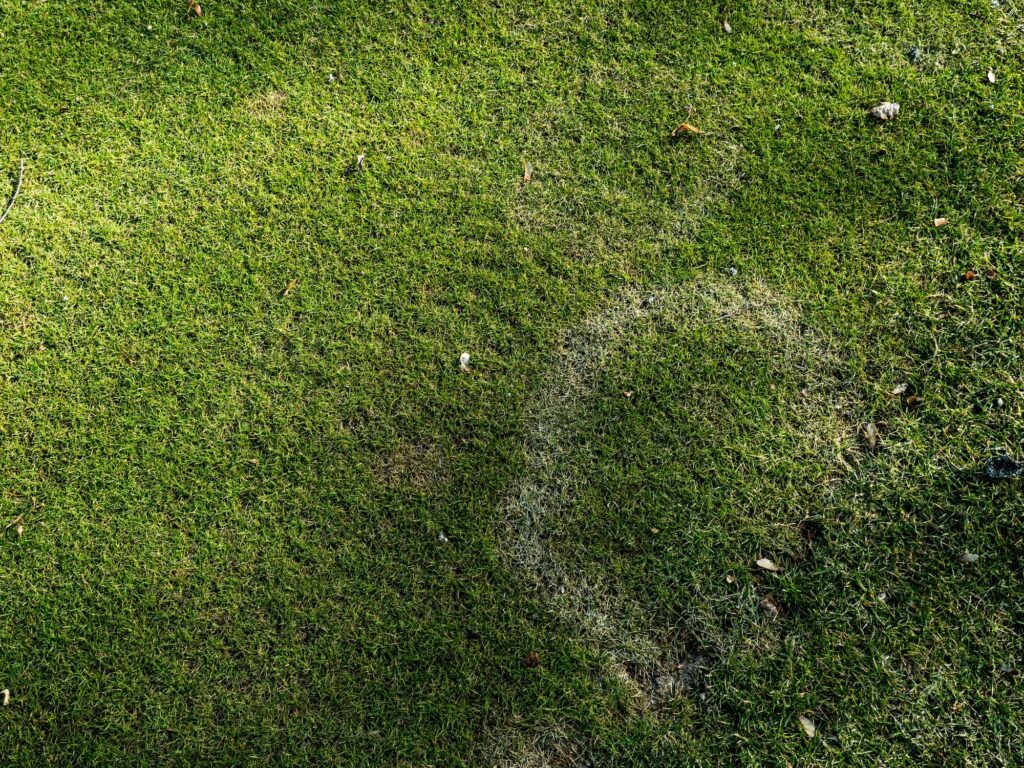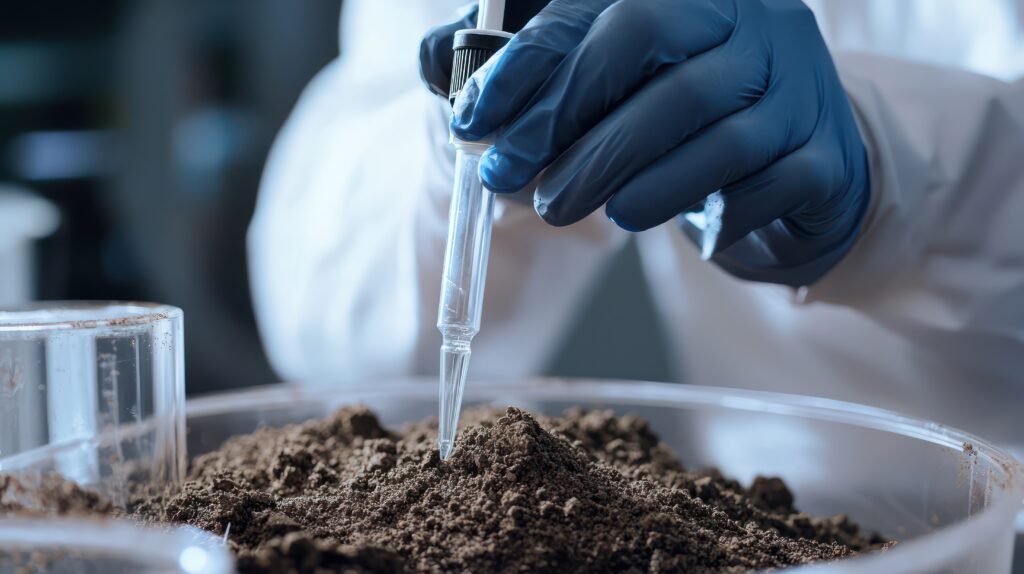Golf course superintendents and agronomy experts know that soil chemistry profoundly affects turfgrass quality, playability, and overall course sustainability.
While physical analyses reveal how water and air move through the profile, chemical analyses address the nutrient status and potential toxicities that impact turf growth.
By understanding these chemical parameters, you can develop a fertilization and amendment plan that maximizes turf performance while minimizing environmental impact.
Why Chemical Soil Testing Is Essential for Turfgrass Performance
Chemical soil tests are invaluable tools for:
- Accurate Fertilization: Ensuring you apply the right nutrients in the right amounts.
- Cost Savings: Preventing over-application of inputs like nitrogen, phosphorus, and potassium.
- Environmental Protection: Reducing the risk of nutrient runoff and leaching into water bodies.
How Soil Chemistry Affects Nutrient Availability and Root Development
Turfgrass roots rely on a precise balance of macronutrients (N, P, K), secondary nutrients (Ca, Mg, S), and micronutrients (Fe, Mn, Zn, Cu, B, Mo, Cl). Soil chemistry determines how readily available these nutrients are to the roots. Factors such as pH, salinity, cation exchange capacity (CEC), and base saturation play major roles in whether nutrients remain in the root zone or become locked up.
The Role of pH, Salinity, and Toxicity in Golf Course Maintenance
- pH: Dictates nutrient solubility and microbial activity.
- Salinity (EC): Excess salts can damage turfgrass, especially in arid or coastal regions.
- Toxicities: Heavy metals or chemical residues can inhibit root growth and threaten turf health.
With these fundamentals in mind, let’s dive into the specific chemical tests every superintendent should consider.
1. Soil Nutrient Analysis
Measuring Macronutrients (N, P, K) and Secondary Nutrients (Ca, Mg, S)
A standard soil nutrient test typically reports levels of:
- Nitrogen (N): Often reported indirectly via organic matter or directly as nitrate/ammonium.
- Phosphorus (P): Critical for root development and energy transfer in turf plants.
- Potassium (K): Enhances stress tolerance and regulates stomatal function.
- Calcium (Ca), Magnesium (Mg), Sulfur (S): Often needed in smaller quantities but still vital for cell wall strength, chlorophyll production, and protein synthesis.
Optimal Nutrient Ratios for Golf Course Turf
- N:P:K Ratios can vary depending on season, turf species, and growth objectives. Greens generally require a balanced program that promotes dense, uniform growth without excessive thatch development.
- Ca:Mg Balance: Affects soil structure and can influence the turf’s ability to access other nutrients.
Correcting Nutrient Deficiencies for Sustainable Growth
- Targeted Fertilization: Apply nutrients based on soil test recommendations rather than guesswork.
- Slow-Release Nitrogen: Ensures a steady supply of N without excessive flushes of growth.
- Foliar Applications: Useful for quick correction of micronutrient deficiencies.
2. Micronutrient Analysis
Importance of Fe, Mn, Zn, Cu, B, Mo, and Cl in Turf Health
While required in smaller amounts, micronutrients are crucial for:
- Enzymatic functions (e.g., Fe, Mn)
- Chlorophyll synthesis (e.g., Fe)
- Protein synthesis and carbohydrate metabolism (e.g., Zn, Cu)
Even a slight deficiency can reduce turf vigor and color.
Identifying Deficiencies and Toxicities in Golf Course Soils
- Leaf Tissue Analysis: Can complement soil tests to confirm deficiency suspicions.
- Visual Symptoms: Chlorosis (yellowing), necrosis, and stunted growth may indicate specific micronutrient imbalances.
Adjusting Fertilization Strategies Based on Micronutrient Needs
- Chelated Forms: Improve nutrient uptake, especially for iron and manganese.
- Soil or Foliar Delivery: Select the method that optimizes efficiency and minimizes loss.
3. pH and Buffer pH
Understanding the Role of Soil pH in Nutrient Availability
pH directly influences how soluble and available nutrients are. The optimal pH range for most turfgrasses lies between 6.0 and 7.0. Outside this window, certain nutrients become less available (e.g., phosphorus in highly acidic soils or iron in highly alkaline soils).
How to Test and Adjust pH Levels for Optimal Turf Growth
- Soil pH Test: Typically involves a 1:1 or 1:2 soil-to-water ratio.
- Buffer pH: Determines how resistant the soil is to pH change (important for calculating lime or sulfur requirements).
The Effects of Lime and Sulfur Applications on Soil pH
- Lime (Calcium Carbonate): Raises pH and provides calcium.
- Sulfur or Acid-Forming Fertilizers: Lowers pH by producing sulfuric acid upon microbial breakdown.
4. Soluble Salts (Electrical Conductivity – EC Test)
Assessing Salt Accumulation in Golf Course Soil
Electrical conductivity (EC) measures the concentration of soluble salts in the soil. High EC levels can be due to:
- Poor-quality irrigation water.
- Over-fertilization.
- Natural salt buildup in arid regions.
How High Salinity Affects Turfgrass Health and Growth
Excessive salts lead to osmotic stress, making it harder for turf roots to absorb water. This can manifest as:
- Leaf burn and desiccation.
- Reduced seed germination and root depth.
- Increased susceptibility to disease and environmental stress.
Strategies to Reduce Soil Salinity Through Leaching and Amendments
- Leaching: Apply enough water to flush salts beyond the root zone (requires well-draining soil).
- Amendments: Gypsum (calcium sulfate) can help displace sodium and other salts.
- Improved Drainage: Essential for moving salts out of the profile.
5. Sodium Adsorption Ratio (SAR) and Exchangeable Sodium Percentage (ESP)
Understanding Sodium’s Impact on Soil Structure
High sodium levels cause soil dispersion, reducing aggregation and making the soil prone to crusting. This leads to poor water infiltration and root development issues.
How High SAR and ESP Cause Soil Dispersion and Poor Drainage
- SAR: Compares sodium to calcium and magnesium levels in soil solution.
- ESP: Measures the percentage of sodium on the cation exchange sites relative to total exchangeable cations.
High values indicate potential structural breakdown, leading to compaction and runoff.
Managing Sodium with Gypsum and Proper Irrigation Techniques
- Gypsum Applications: Provide calcium that displaces sodium ions on soil colloids.
- Irrigation Practices: Use water with lower sodium content, and employ frequent leaching if feasible.
6. Base Saturation (%)
Measuring Soil Cations (Ca, Mg, K, Na) for Balanced Nutrition
Base saturation reports the proportion of key cations (calcium, magnesium, potassium, sodium) occupying soil’s exchange sites. Ideal ranges often cited (though course-specific variations exist) are:
- Ca: 65–75%
- Mg: 10–15%
- K: 2–5%
- Na: < 1–2%
How Base Saturation Affects Turfgrass Growth and Fertilization Needs
When any single cation dominates, it can:
- Displace other nutrients.
- Cause suboptimal root growth or deficiency symptoms.
- Affect soil physical structure.
Adjusting Soil Chemistry to Improve Base Saturation
- Calcium Amendments (lime or gypsum) if Ca is low.
- Potassium Fertilizers to raise K saturation.
- Magnesium (e.g., dolomitic lime) if Mg is deficient.
7. Lime Requirement Test
Determining Lime Needs for pH Adjustment
A lime requirement test goes beyond a standard pH test. It factors in soil buffering capacity, indicating how much lime is needed to reach a target pH.
How to Apply Lime for Maximum Effectiveness
- Particle Size: Finer lime reacts more quickly.
- Timing: Apply when the soil can be incorporated (e.g., aeration), ensuring contact with deeper layers.
- Frequency: Over-application can overshoot desired pH, so multiple split applications may be safer.
Best Practices for Maintaining Optimal Soil pH
- Monitor pH Regularly: At least annually, especially in sand-based greens.
- Use Split Applications: Gradual adjustments lead to more stable, predictable pH changes.
8. Bicarbonate Test
Identifying Carbonate Buildup That Affects Water Infiltration
High levels of bicarbonates (HCO₃⁻) in irrigation water or soil can precipitate calcium and magnesium, forming insoluble compounds and reducing water infiltration.
How Excess Bicarbonates Lead to Alkaline Soil Conditions
Bicarbonates raise soil pH by generating hydroxyl ions (OH⁻). Over time, this alkalinity can cause micronutrient deficiencies (like iron chlorosis) and reduce turf color and density.
Strategies to Reduce Bicarbonates in Turfgrass Soil
- Acid Injection: Injecting acids (sulfuric or phosphoric) into irrigation water to neutralize bicarbonates.
- Acidic Amendments: Elemental sulfur or acid-forming fertilizers applied to the soil.
- Frequent Leaching: With low-bicarbonate water when available.
9. Gypsum Requirement Test
How Gypsum Improves Soil Structure and Reduces Sodium Risks
Gypsum (Calcium Sulfate) adds soluble calcium to displace sodium from the soil colloids. By doing so, it prevents soil dispersion and maintains aggregates essential for water infiltration and root growth.
Determining Gypsum Application Rates
This test considers your soil’s SAR, ESP, and current calcium levels to prescribe a gypsum application that effectively corrects sodic conditions without over-amending.
Best Practices for Gypsum Application on Golf Courses
- Apply During Aerification: Ensures better contact with deeper soil layers.
- Leach with Fresh Water: After gypsum application, to flush displaced salts.
- Monitor Salinity and pH: Over-application can affect other soil parameters.
10. Soil Toxicity Test
Detecting Harmful Levels of Heavy Metals and Chemical Residues
Excessive levels of lead (Pb), arsenic (As), cadmium (Cd), or residual pesticides can jeopardize turf quality and pose environmental concerns. Soil toxicity testing helps identify these risks early.
Long-Term Effects of Soil Contaminants on Turfgrass
- Stunted Growth and Chlorosis: Heavy metals can interfere with nutrient uptake.
- Reduced Microbial Activity: Contaminants may harm beneficial soil microbes.
- Regulatory Compliance Issues: High contamination levels might exceed local or federal guidelines.
Remediation Strategies for Contaminated Soil
- Phytoremediation: Using plants that accumulate metals to reduce toxicity.
- Bioremediation: Introducing microbes designed to degrade specific contaminants.
- Soil Replacement: In severe cases, partial or full removal of contaminated soil.
11. Nitrate and Ammonium Test
Identifying Available Nitrogen Forms in Soil
Nitrogen in soil exists primarily as nitrate (NO₃⁻) and ammonium (NH₄⁺). Each form affects turfgrass differently:
- Nitrate is readily available but prone to leaching.
- Ammonium is more stable in soil but can convert to nitrate via nitrification.
The Impact of Nitrate Leaching on Turf and Environment
Excess nitrate can leach into groundwater, prompting environmental and regulatory concerns. Over-application of nitrogen fertilizers also contributes to:
- Algal blooms in nearby waterways.
- Wasted resources and increased management costs.
Efficient Nitrogen Management Strategies
- Slow-Release N Sources: Provide a steady supply, reducing leaching risks.
- Tissue Testing: Helps calibrate nitrogen inputs to actual plant needs.
- Precision Irrigation: Minimizes water surplus that drives nitrate leaching.
Key Takeaways for Chemical Soil Analysis in Golf Courses
- Holistic Approach: Chemical soil testing complements physical and biological tests, offering a 360° view of turf health.
- Data-Driven Decisions: Adjust fertilization and amendments based on specific test results rather than guesswork.
- Sustainable Management: Well-informed nutrient programs reduce environmental impact and preserve resources.
How to Interpret Test Results for Better Fertilization Practices
- Combine Tests: pH, EC, SAR, base saturation, and nutrient analysis collectively guide fertilization strategies.
- Targeted Approaches: Address the most limiting factor first (e.g., pH imbalance, micronutrient deficiency).
- Monitor Trends: Regular retesting helps track improvements and catch emerging issues before they escalate.
Ongoing Soil Monitoring Strategies
- Annual or Bi-Annual Testing: Frequent testing builds a reliable database for historical trends.
- Site-Specific Sampling: Different areas (greens, tees, fairways, roughs) can have unique chemical profiles.
- Collaboration with Experts: Partner with agronomy professionals, likeThompson Golf Course (TGM-Legacy), for advanced testing and interpretation.
By leveraging chemical soil analysis as part of a comprehensive turf management program, superintendents can optimize nutrient balance, correct soil chemistry issues, and ultimately elevate the playing experience for golfers.


